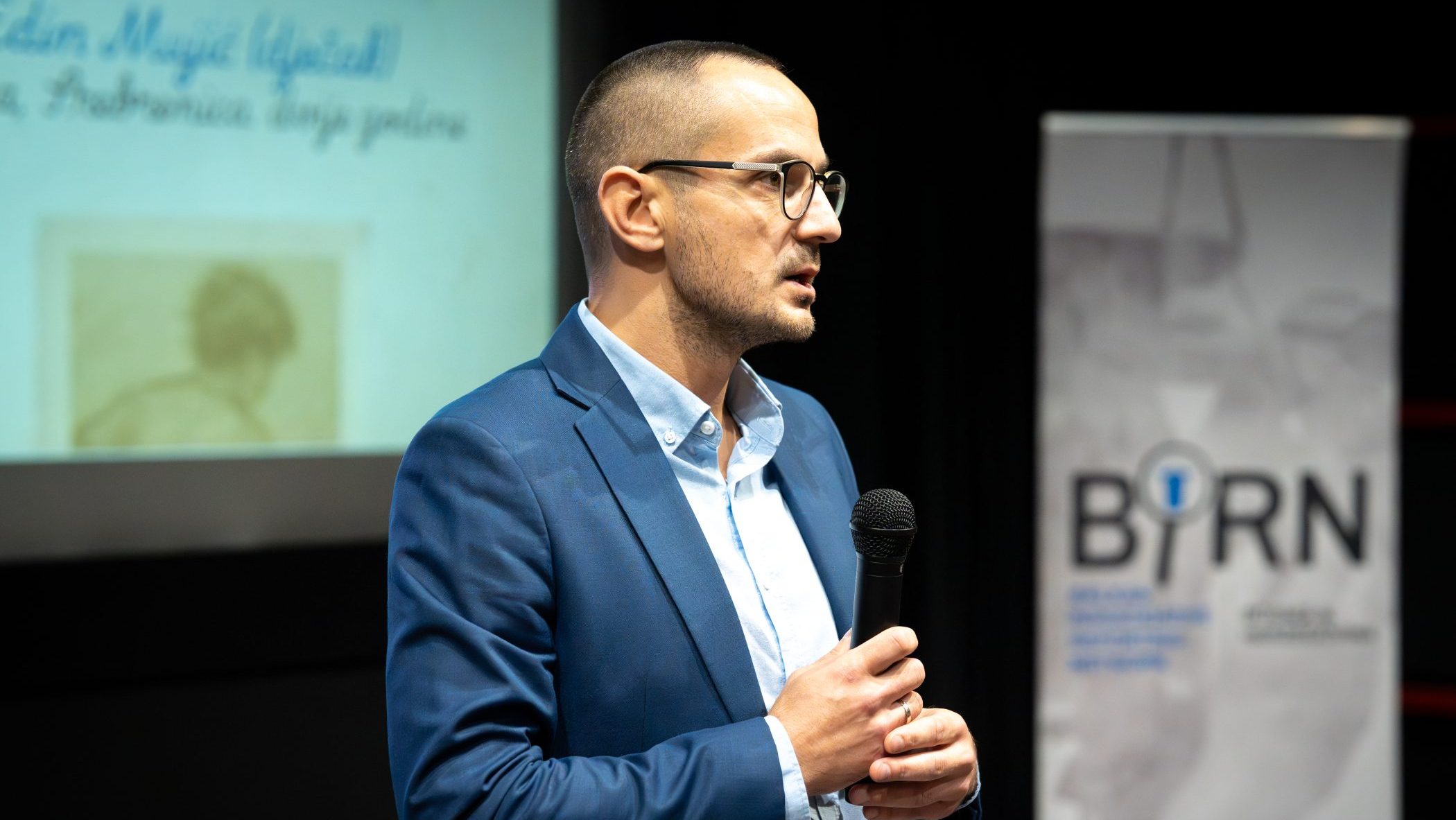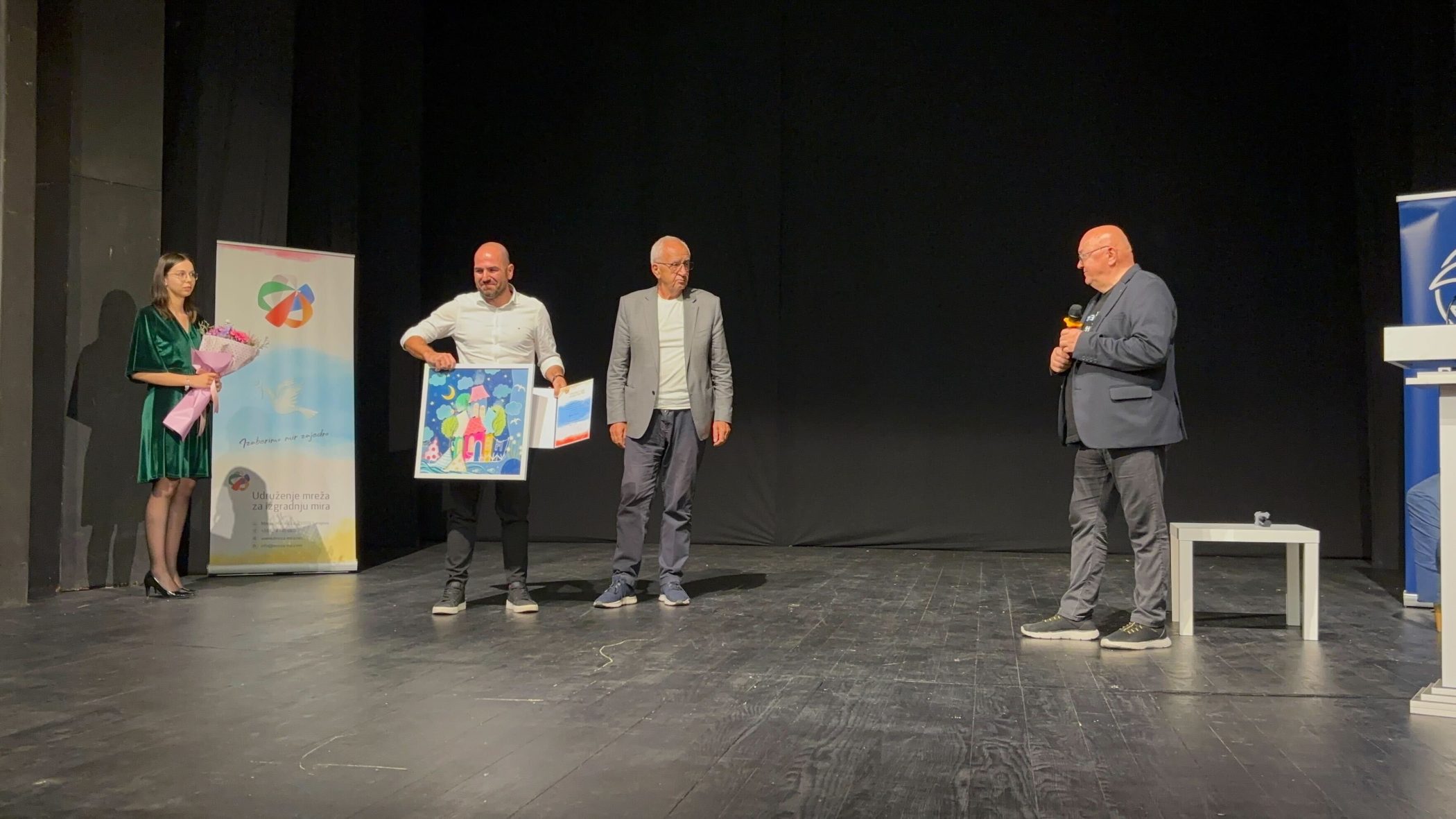This post is also available in: Bosnian
The prosecution has questioned four witnesses who spoke of the statements in the second count of the indictment against Momcilo Mandic, a former high official of the Bosnian Serb government.
Mandic is charged that, as former Srpska Republika Bosnia and Herzegovina justice minister, he was responsible for the operation of all correctional organisations that functioned under the control of the Serb government. One location mentioned in this part of the indictment is the former Kula camp, in what is now East Sarajevo.
Two of the four prosecution witnesses said that they saw Mandic in Kula camp, but none were able to say in what function he came.
Witness Mirsad Krslak was taken from his apartment in the Sarajevo settlement Dobrinja, jointly with his parents and wife Tamara, on June 19, 1992. His family was released immediately, but Krslak stayed in Kula camp for 19 days.
Krslak claims that the Kula inmates were placed in small rooms without adequate hygienic conditions, with minimum meals”potentially two times per day”.
“We had a bucket that served as a toilet in our room,” the witness said while describing the conditions in the room where he was held with another 40 camp inmates.
Krslak claims that he saw the indictee Momcilo Mandic once.
“He came into my room and introduced himself by saying his name. He asked me when I had arrived,” Krslak remembers, adding that he had answered that he had been brought to the camp rather than having arrived at it, after which one of Mandic’s escorts ordered him not to speak and closed the door.
Avdo Pizovic, who was brought in at the end of July, after spending around 20 days in detention camps in Hadzici, also saw Mandic in Kula. Pizovic was exchanged from Kula on December 11, 1992.
As he said, he saw Mandic once in the courtyard, dressed in civilian clothes.
“One of the camp inmates was fixing his car. Mandic gave him cigarettes and food,” Pizovic said.
Pizovic also remembered a visit by former Bosnian Serb leader – and now Hague fugitive – Radovan Karadzic and Paddy Ashdown on August 18, 1992. During the Bosnian war, Ashdown traveled to the country on behalf of the British parliament in order to inform them about the situation.
The witness said that the two men were accompanied by a German journalist, who was writing down names of camp inmates. As Pizovic said, during the visit Karadzic approached a group of older camp inmates and ordered their release.
Both Pizovic and Krslak spoke of the”voluntary” labour, which the camp inmates applied for “in order to eat”.
According to their explanations, as the food in the camp was very bad, they would go to work escorted by uniformed soldiers and armed civilians to the surrounding towns where civilians sometimes gave them food. They also worked with the army on frontlines, where they dug trenches and built bunkers.
On May 12, 1992,witness Mirsad Draginic was taken from his apartment in Dobrinja to Kula detention camp and was released on May 21.
“I was arrested by people who had masks. They had a flag that said ‘Serb chetnik movement’,” Draginic said.
He claims that he and other camp inmates were beaten on multiple occasions by Serb soldiers and guards.
Witness X also testified of the time she spent in the Kula camp. She told the court that she was taken to the location in June 1992 after being arrested in her Grabavica apartment. She was placed in the camp with around ten other women, and they were all regularly taken to work in houses in Grabavica and Vrace.
“They would take me to work and bring me back at night. My meal consisted of whatever someone gave me to eat,” X said.
“We always lived in fear. We did not talk much or describe what we did. And all of us were going through something. We would just ask each other “how did you do today?” witness X said.
She spent 21 days in Kula detention camp and says that the psychological and physical consequences remain with her to this day.
The next hearing is scheduled for November 16, 2006.

